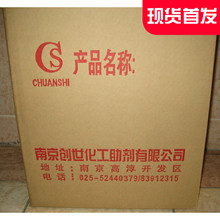Redox flow batteries hold great promise when it comes to grid-scale storage of renewable energy, because they can hold vast amounts of it in huge tanks at relatively low cost. Regulating the flow of energy in between these reservoirs sits a membrane, and scientists in China have come up with a new design for this key component that solves some shortcomings and takes the technology closer to realizing its potential.
Massive lithium-ion batteries like the one built by Tesla in South Australia are one way to store renewable energy, but these cost tens of millions of dollars to put together. Redox flow batteries, where energy is stored in liquid electrolytes within huge tanks, offer a cheaper alternative, and may also hold the energy for months at a time, as planned at the world's largest redox flow battery currently under development in Germany.
A popular chemistry for these types of batteries lean on the metal vanadium for the electrolyte, and the most common membrane material for these vanadium redox flow batteries is perfluorinated sulfonic acid (PFSA). One problem with this, however, is that vanadium ions tend to permeate the membrane and make the entire battery unstable, compromising its performance and shortening its lifespan.
Researchers at the Chinese Academy of Sciences have taken aim at this issue, through a hybrid material that fine tunes the function of the membrane. Tungsten trioxide nanoparticles were grown in-situ on the surface of very fine sheets of graphene oxide, a single-layered sheet of graphite oxide made through the oxidation of graphite.
These sheets were embedded into a novel PFSA membrane with a sandwich structure that had also been reinforced with a thin layer of polytetrafluoroethylene, the basis for Teflon. This saw the graphene oxide sheets act as a barrier to selectively reduce the permeation of vanadium ions, while the nanoparticles also served as active sites to promote the transport of protons, making for a high Coulumbic efficiency and high energy efficiency, of more than 98.1 percent and 88.9 percent, respectively.
The authors say this exceeds the efficiencies of commercially available membranes, while also addressing the stability issue. Altogether, the team says the experiments indicate the hybrid membrane is highly suited to vanadium redox flow batteries, but its potential mightn't end there. They note areas such as fuel cell technology and water filtration, which also rely on finely tuned membranes to allow selective passage of ions, could stand to benefit from the design as well.
The research was published in the journal Advanced Functional Materials.
Source: Chinese Academy of Sciences


 相关文章
相关文章




 精彩导读
精彩导读


 热门资讯
热门资讯 关注我们
关注我们
